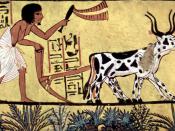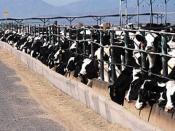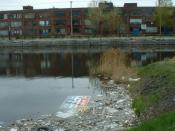Until about four decades ago, crop yields in agriculture depended mainly on internal resources, recycling of organic matter, built-in biological control mechanisms and rainfall intensity and frequency. At that time, agricultural yields were modest, but stable. Production was safeguarded by growing more than one crop. Inputs of nitrogen were gained by rotating major field crops with legumes. In turn rotations suppressed insects, weeds and diseases by effectively breaking the life cycles of these pests. Most of the labor was done by the family with occasional hired help.
Now that farms have to produce in larger quantities in order to survive, rules have changed. We, farmers, have to produce food to support much more people than before. The old farming system does'nt work anymore. Since few years ago, government put laws to protect environment against agricultural pollution. More and more people become concerned about the long-term sustainability of existing food production systems.
Agricultural sector is not different from other sectors. If we want to stay in the game and be profitable, we need to become more efficient which means produce more at a lower price. It is an economical issue, just like in every industry. To arrive to be economically viable, we need to make use of technology available to us, sometimes without regards to the environment. Phosphorus is actaully the major problem in Quebec. Over fertilization led to a build up of phosphorus in our fields. For this reason, we now have to create fertilization plans. The goal of theses plans is to reduce the amount of fertilizer applied in fields. Manure management is also a top issue in the moment because of water contamination. Large dairy and swine operations produce large volume of manure which have to be spread every year. In order to avoid runoff ro leaching...


